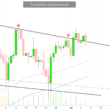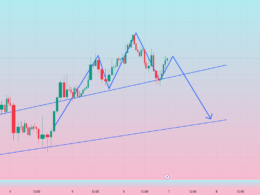In a surprising turn of events, the decline in yields has triggered an impressive surge in risk assets across the board. From stocks to high-yield debt, as well as currencies and precious metals, the so-called everything rally has gained momentum.
Market consensus has undergone a noteworthy transformation, with expectations now indicating that the Federal Reserve is likely to initiate a reduction in its key policy interest rate. Federal-funds futures prices suggest a potential 25-basis point cut, lowering the rate from 5.25% to 5.50% as early as March of this year. Moreover, the futures market has priced in the possibility of up to six additional quarter-point cuts by the end of 2024, as reported by the CME FedWatch site.
Just a few months ago, the prevailing belief was that the tightening of financial conditions would eliminate the necessity for the Fed to raise short-term rates any further. This belief was primarily driven by the surge in bond yields, the strengthening dollar, and a slump in the stock market. However, recent developments have led to a significant easing in financial conditions.
Bond yields have declined, the greenback has weakened, and equities have experienced a noteworthy rally. These trends have generated widespread expectations that there will be no further rate hikes, and instead, cuts will materialize sooner rather than later over the course of this year.
Notably, Fed governor Christopher Waller expressed confidence last week that inflation is subsiding and gradually moving toward the central bank’s target of 2%. With this encouraging trend potentially continuing for several more months, Waller suggested that the Fed may consider initiating rate reductions even without a rise in unemployment.
The overall market sentiment is now largely focused on the anticipated rate cuts by the Federal Reserve and the potential impact they will have on risk assets. As investors eagerly await further developments, it remains to be seen how this shift in monetary policy will influence the financial landscape in the coming months.
High-Yield Bonds and Growth Funds Attract Investor Interest
Investors have been showing a strong interest in high-yield bond funds, domestic growth funds, and small-cap funds, as well as funds in interest-sensitive sectors such as financials and utilities, according to Bank of America’s strategy team led by Michael Hartnett. One notable beneficiary of this trend is Cathie Wood’s ARK Innovation ETF, which the BofA analysts have cheekily observed closely follows the price movements of Austria’s famous 100-year bond. Both investments appear to be similarly dependent on changes in interest rates.
In the coming days, key tests of Federal Reserve rate-cut expectations will be conducted. Specifically, the November employment report, scheduled to be released this Friday, will serve as a significant economic barometer for the Federal Open Market Committee as they prepare for their Dec. 12-13 meeting. While most economists anticipate a rise of 200,000 nonfarm payrolls, NatWest’s analysts suggest this figure may be artificially boosted by the return of 50,000 formerly striking workers and forecast a 240,000 increase.
It is important to note that the last FOMC Summary of Economic Projections, released in September, only indicated two expected 25-basis-point trims in 2024. However, the markets have now priced in at least four and potentially six reductions. Investors will be keen to see if the Fed’s policy-setting panel aligns with their outlook.





